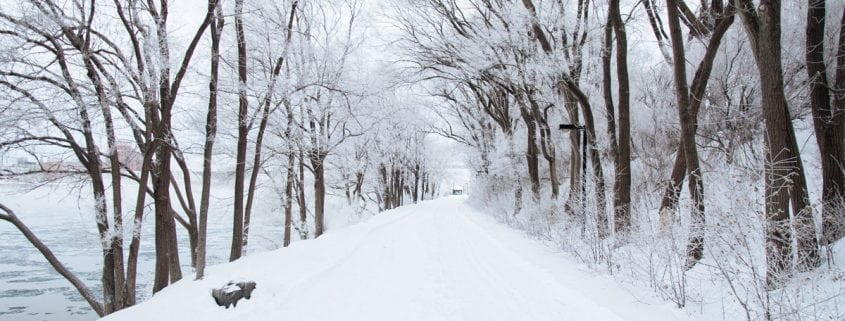Preparing for a disaster
Every year, the U.S. is hit by many natural disasters, including snow and ice storms, tornadoes, hurricanes and wildfires. These types of disasters pose a significant threat to our communities and homes. The most important step you can take to keep you and your family safe is to prepare beforehand, but knowing what to do during and after the event is crucial as well.
Before disaster strikes, familiarize yourself with the types of disasters that are common in your region, especially if you’re new to the area. Many of the specifics depend on what type of disaster you’re expecting, but there are several general guidelines to keep in mind as you prepare:
Water: You will need one gallon per person per day. If you assume your family of four may be stranded for a week, store a minimum of 28 gallons.
Food: Stock up on non-perishable or long shelf-life items, such as wheat, soybeans, canned fruits, peanut butter, jelly and condensed soups.
First Aid Kit: Make sure your kit includes adhesive bandages (assorted sizes), antiseptic wipes, aspirin, hydrocortisone ointment, scissors and a thermometer. For a full list of suggested items, visit www.redcross.org.
Flashlights and candles: Be sure to keep extra batteries and matches (in a waterproof container) on hand.
For additional guidance on emergency items to keep around the house, visit www.ready.gov/build-a-kit. Also consider training offered by local emergency management services such as Community Emergency Response Team (CERT) classes.
Some disasters occur suddenly, but many bring advance warnings, like hurricanes and winter storms. Pay special attention during the week leading up to the event for local and state government warnings and evacuation notices. Make sure every family member knows what your emergency plan is: staying or leaving, safe rooms in the house, where supplies are located, what to do if anyone is separated, and how to notify loved ones that you’re safe after the event. It’s also a good idea to know where your home’s main water and gas shutoff valves are located.
Electric co-ops spend millions of dollars each year to improve the resiliency and durability of our distribution systems, but it is possible to lose power during a storm. The outage could be momentary or last hours or even days. If you live in an area where loss of power after a storm could be dangerous, consider purchasing a backup generator for your home. These can cost anywhere from a few hundred to few thousand dollars, depending on your needs. Be sure to test the generator before the disaster to ensure it’s operating properly.
If you don’t have a backup generator and lose power, don’t panic. Most power outages are short and will not last more than a few hours. However, without knowing in advance how long the outage will last, it’s wise to assume and act as though it will last for days. Here are a few general tips for wise energy practices during a disaster:
- Consume perishable and refrigerated foods first before they spoil.
- Pack frozen foods close together and consider freezing water bottles to eliminate any air pockets. The frozen water will help keep the food cooler longer.
- Make sure you have alternative lighting sources, like candles and flashlights (with spare batteries) located throughout the home.
- Keep manual tools such as a can opener on hand to replace any electronic gadgets you typically use.
- Similar to filling a bathtub with water before a storm, make sure that all cell phones are fully charged.
- If the disaster involves lightning, unplug all electronic devices to protect against a power surge.
After the storm, be cautious when leaving your home. Listen to government warnings and use common sense when approaching any damaged buildings or fallen trees. If you see a power line that is down, always assume the wires are live and dangerous. If possible, call your local electric cooperative to report the downed power line.
With a little bit of forethought, you’re highly likely to make it through a disaster without too many problems. Remember, you and your family’s safety should always come first.
For more information on disaster preparedness, visit www.ready.gov.





Leave a Reply
Want to join the discussion?Feel free to contribute!